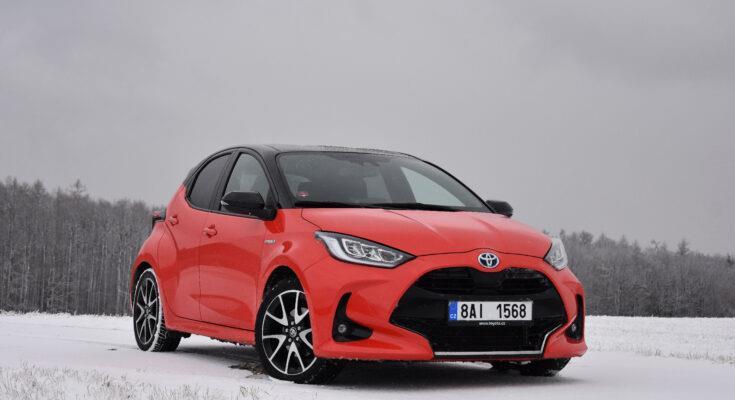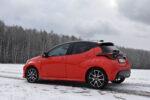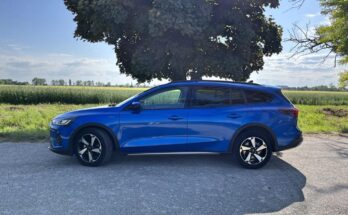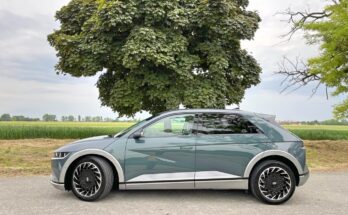In the past few days, we tested the new fourth generation Toyota Yaris, i.e. a new car from the ground up, which will also be produced in the Cologne car factory. The model, which is so important for sales in Europe, comes with a nice robust design and a quite nimble hybrid powertrain.
The new Yaris is currently available with either a classic three-cylinder petrol engine or a three-cylinder petrol engine. The third on the menu is a hybrid that is so typical for Toyota.

Exterior
In terms of external dimensions, the new generation gave us considerably "stout" proportions. The car is now wider with a longer wheelbase, the track itself has also increased. The only place where the new Yaris loses slightly is in its length.
At first glance, its massive proportions will pleasantly surprise you, its wide "stance" simply suits it. The Yaris very effectively pushes individual wheels outside the body, this effect is then elegantly accompanied by extended fenders. Its horizontal proportions and robust stance are supported by the orientation of both the front and rear lamps. The rear lamps are even connected and integrated into one horizontal "bar", which, like the roof, is tuned to a black shade.
A similar principle is followed by the front mask of the car, which together with the part of the front bumper is again painted in contrasting black, optically making the mask itself larger and giving the car an unmistakable expression.
The fourth generation of the Toyota Yaris definitely succeeded in terms of exterior design, the origin of its robust and dynamic shapes finds its clear justification in the "sharp" version, i.e. in the Yaris GR .

Interior
Enthusiasm for the imaginative and dynamic shapes of the exterior itself easily leaves us in the interior. Unfortunately, the already traditionally well-crafted interior is dominated exclusively by black color and a rather boring and traditional layout of the dashboard.
Its dominant feature was the centrally located and elevated display of the on-board infotainment, whose graphic environment and controls look quite outdated in the context of today's competition.
And speaking of the weak points of the interior, it is impossible not to mention the controls for heating the front seats, I have not encountered such a rough and noisy operation of the controls for a long time.
The instrument panel in front of the driver, which offers a pair of circular digital indicators with a central display of the on-board computer, is not particularly convincing either. And it also takes a while to get used to the location of the interior door handle, which is ergonomically "swapped" with the window controls.
On the contrary, I have to praise the multifunctional steering wheel, which offers excellent proportions and workmanship. A good feeling from the steering wheel is certainly supported by the excellent steering, which reacts immediately and with a very good response from the front wheels.
In terms of interior space, the fourth generation Toyota Yaris can carry a crew of four fairly well, and the rear position offers plenty of headroom thanks to the rounded shapes of the roof.
The batteries of the hybrid drive system are located just under the seat of the back bench, so they have no overlap in the size of the luggage compartment, which in the case of the new generation has a rather modest 260 liters.

Powertrain and driving characteristics
The Yaris is currently offered with either a basic three-cylinder liter petrol engine that works with a five-speed manual, or a three-cylinder petrol fifteen-cylinder is available, which is combined with either a six-speed manual or a continuously variable automatic transmission.
Well, it wouldn't be Toyota if the portfolio of engines offered lacked a hybrid option. This is represented here by a three-cylinder fifteen-cylinder working with an electric motor and again an automatic transmission with continuously variable transmission.
The tested hybrid found its basis in the two-liter four-cylinder from the Toyota Corolla, but in the case of the new Yaris, it was partially depleted by one cylinder. The three-cylinder 15-liter engine alone will offer an output of 68 kW, in combination with the electric motor, which together with the batteries form a hybrid drive, we reach a decent combined output of 85 kW.
As a long-time pioneer of hybrid powertrains, Toyota makes progress with each new generation. The same is the case with the current generation, which gave the Yaris a very nimble and economical powertrain.
After only a few meters, the new Yaris will pleasantly surprise you with its agility, because the gasoline three-cylinder is adequately and quickly doped with electric kilowatts, and it is easy to tell from its driving performance.
The announced three-cylinder engine is refined and its sound in the cabin is not at all annoying. The e-CVT automatic transmission has also made tremendous progress, which no longer revs the engine so senselessly during acceleration. Very surprisingly, the new Yaris behaved within the freeway pace, where it was able to cope with speeds above the freeway limit.
The hybrid powertrain brings the greatest savings in urban traffic, where you are able to make the most of the saved electrical energy. Personally, I used the new hybrid Yaris to move around the districts more, especially in the winter season, which is why I rate its weekly average consumption of around 5.5 liters as very good.

In conclusion
The new generation of Toyota Yaris comes with robust exterior body shapes that perfectly suit this primarily city car. The hybrid powertrain undoubtedly belonged to the other advantages of the tested piece. The tested hybrid car delivers enough dynamics and at the same time brings all the positives of this powertrain.
One of the weak points of the new Yaris is the interior, although it will offer plenty of roominess, unfortunately, don't expect much of the imagination that is so typical for this segment.
As part of Toyota's special price list, only petrol 1500 models are on offer. You can get the classic 1.5 Dynamic Force (125 horsepower) with a six-speed manual in Comfort equipment with the Style package from CZK 389,000 including VAT. The hybrid powertrain 1.5 Hybrid (116 horsepower) with automatic transmission e-CVT starts at the promotional price of CZK 479,000 including VAT.
The classic price list also includes the basic three-cylinder liter, i.e. 1.0 VVT-i (72 horsepower) with a five-speed manual and the basic Active equipment, its purchase price is then exactly 350,000 CZK including VAT.
Source: Author's text
Image source: Author's own photos
























